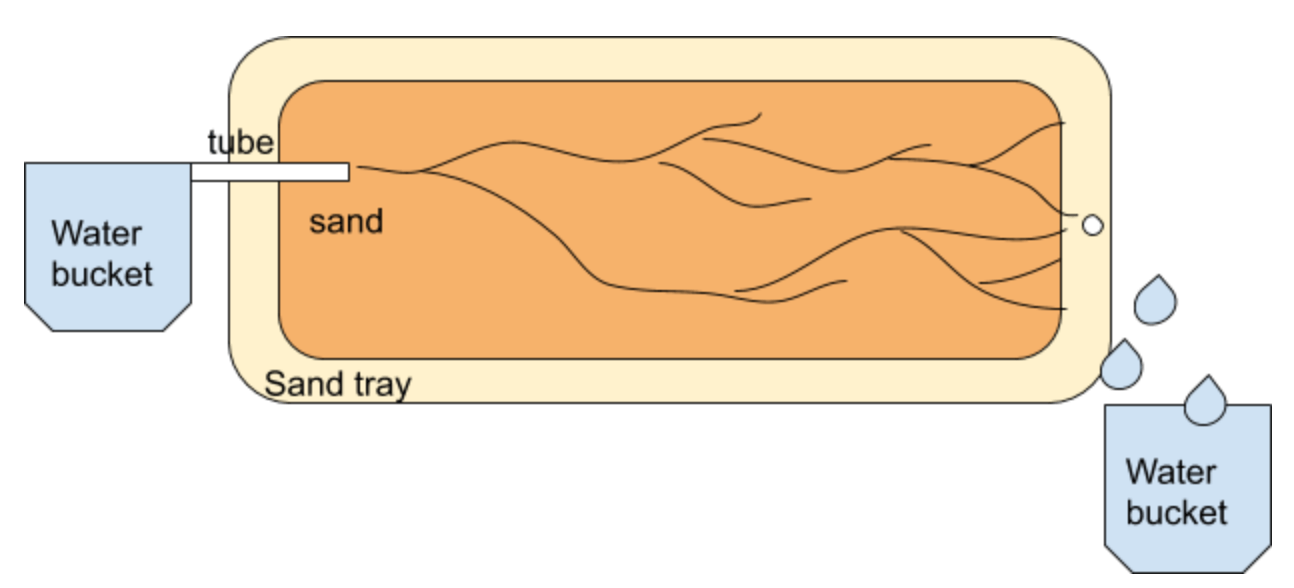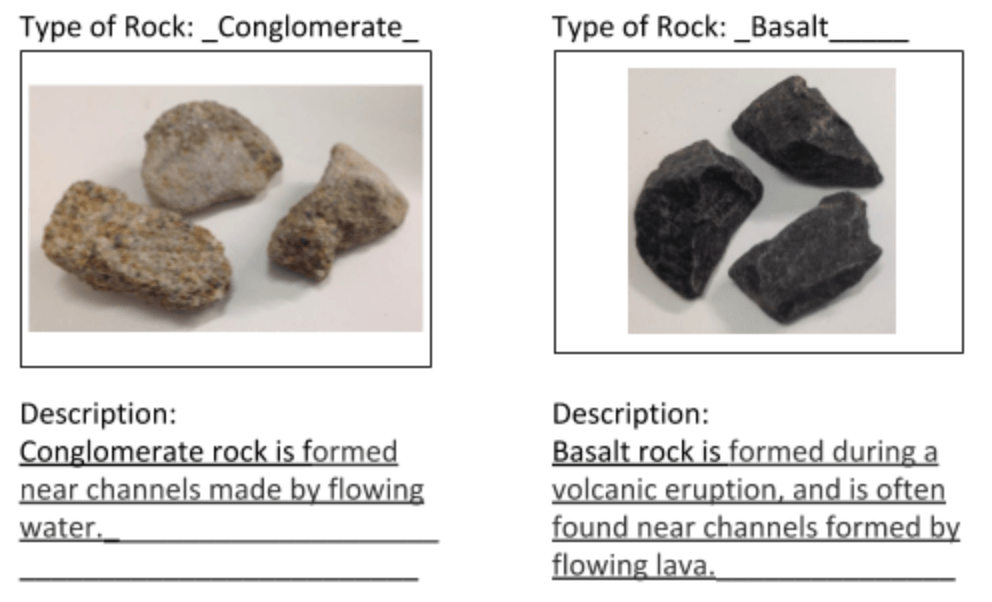What is Key Concept 2?
When landforms on different rocky planets look similar, it is evidence that they may have been formed by the same geologic process.
What is the definition of the term rocky planet?
What are the three components of a scientific argument?
claim, evidence, reasoning
Draw and label the set-up for the Flowing Water Model (be sure to include: sand tray, sand, water, 2 buckets, water tube, and the landform that was created) :

What is the Chapter 3 question?
How can we decide which geologic process formed the channel on Mars?
Label the following scientific argument with the following components: question, claim, evidence, reasoning:
_Evidence__ Cola contains 4-mel.
_Question____ How does drinking cola affect your health?
_Claim___ Drinking cola is bad for your health.
_Reasoning____ 4-mel is a food coloring that has caused cancer in lab rats. Many things that are bad for rats are bad for other living things, like humans.
What is the Unit Question?
How can we search for evidence that other planets were once habitable?
Summarize the article “Investigating Landforms on Venus.” Be sure to include 1) the landform Gerya was studying, 2) the theory he had about how the landform was created and 3) what kind of model he used to test his theory.
The article "Investigating Landforms on Venus" talked about planetary geologist Taras Gerya and his research about novae on Venus. Novae are a landform that look like raised domes with cracks reaching outward in all directions. Gerya had a theory that the novae on Venus were formed by melted rock (magma) pushing up through Venus's thin crust. He used a computer model to test this theory, and was proven correct!
What is Key Concept 3?
Scientist can use models to test their ideas and get evidence about processes in the natural world that are difficult to observe.
Draw and describe the two different types of rock we observed and the different ways they are formed (be sure to label which type of rock is which):

Answer the Unit Question with a CER response.
[It's all you!]